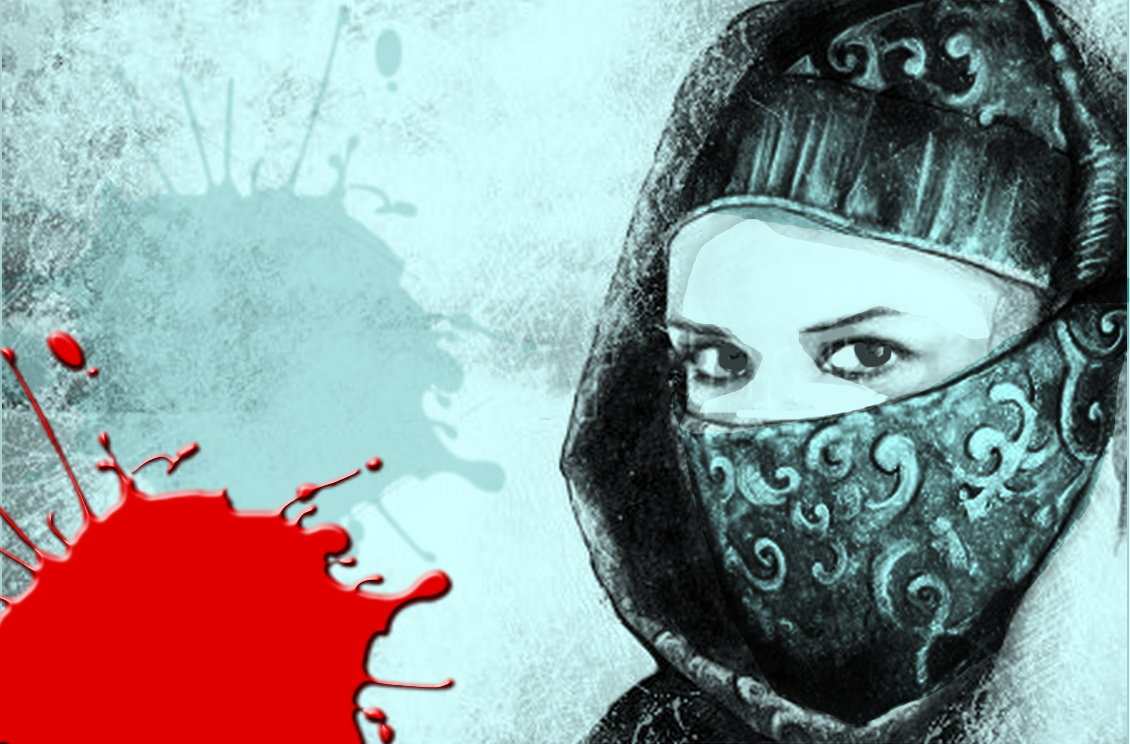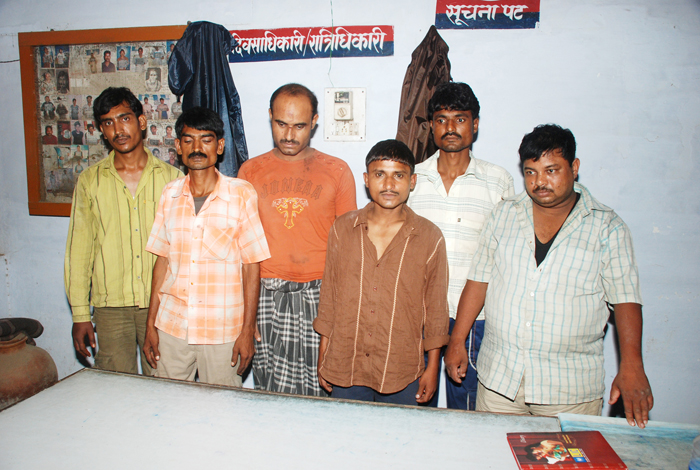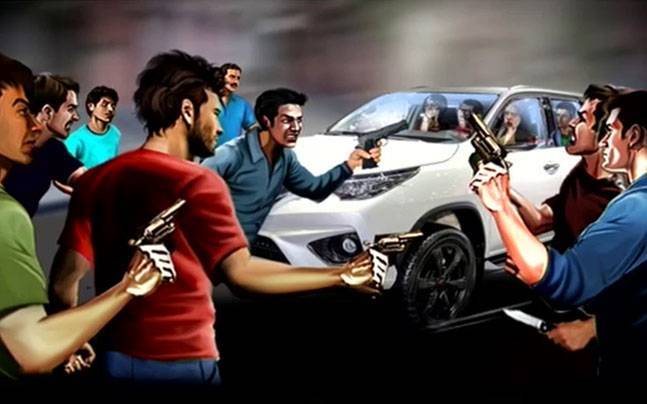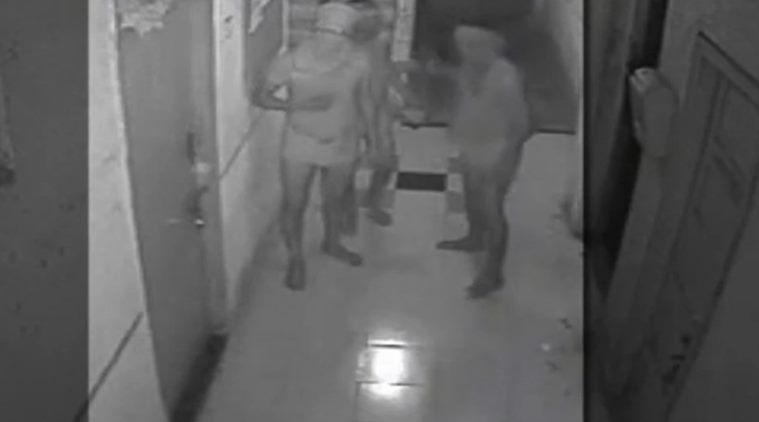Ruthless, organised and disgusting: All about the Bawariya gang
The Bawariya are a semi-nomadic Hindu caste found in the states of Haryana, Punjab, Rajasthan, Madhya Pradesh and Uttar Pradesh in India. They have scheduled caste status in Punjab and Uttar Pradesh. In Punjab, they are known as Bauria. Bawariyas belongs to one part of Rajputs. They are key persons in Rajputs army.
In 1527, Meghalaya kind Babur defeated Rajputs and acquired their kingdom. Later on Bawaries had been sent to forests and they start living their life. After coming to cities Bawaries find difficult to survive as they don’t static place to stay. Now Bawarias might turn as burglers and snatchers and more over what is the status of Bawariyas in democratic India.
The Bawariyas are notorious for a whole host of crimes – murder, rape, burglaries and/or assaults – and their name is enough to send shivers down the spines of villagers and even the police.

Here’s a look at who the Bawariyas are and their tainted crime trail:
1. Bawarias are a nomadic criminal tribe involved in a range of criminal activities for decades now. They primarily operate across Uttar Pradesh but their sightings are also reported from Haryana and Rajasthan – where they originate. Almost all attacks involve incidents of murder, rape, burglaries and/or assaults.
2. The Bawariyas usually split and operate in groups – comprising both men and women, and sometimes even children. A group can generally have 5 to 10 members.
3. Bawariyas are widely known for attacking houses built in near-vacant areas around highways or railway tracks. The Bawariya women are responsible for surveying and identifying potential victims. They pose as utensil or cloth sellers to do a recce of the house they plan to attack. Sometimes, even kids are involved in the surveying process.
4. Before they begin ‘hunting’, the groups choose a spot near highways or railways where their women ceremoniously bid them goodbye. After 15-20 days, gang-members return to the spot to divide their booty.

5. When they attack, the Bawariyas aim for the head so they can easily commit the crime. Also, they leave behind their weapons and mobiles to avoid being tracked or identified.
6.Bawariyas arrested in the past have never given any clues about the rest of their tribe.
7. According to an Amar Ujala report from just days prior to the recent gangrape, four-five villages in Bulandshahr’s Kakod area had reported seeing Bawariya gang members, sending villagers and the police into a panic. Following the reports, 400-500 people from 40 villages held a ‘Mahapanchayat’ at the police station in the presence of the SO, who announced increased police presence and instructed villagers to form groups and keep watch at night.
8. Early this year, three Bawariya members were arrested for abducting and raping a private hospital nurse in Jaipur. During investigation, police found that six men riding two bikes thrashed the nurse and forced her to sit on their bike before raping her at an isolated spot.
9.Rainy season marks the arrival of Bawariyas – the gang considers it an auspicious time to commit crime.
10. Sometimes the gang is also referred to as the ‘Kaccha Banyan gang’ as they preferred to dress in underwear – white vests and striped knickers. It is believed that gang-members are now turning to more traditional forms of clothing to prevent detection by the police.
11. One of the primary reasons police struggle to catch the gang is because they’re known with different names in different areas – ‘bhaatu’, ‘ghumantu’, ‘criminal trap’, ‘mewaiti’, ‘saasi’ and ‘kangda’ are some of the other names given to the Bawariya gang.

12. In April 2015, police arrested five men off a bus in Mathura who turned out to be Bawariyas. Rs 5 lakh, gold jewellery and chains, country-made pistols, live cartridges and nine mobiles were recovered from them, among other things. The arrested gang members revealed that they had a pattern of shifting to new grounds after committing crime at one spot.
13. Then, in July, they arrested five gang members from Ghaziabad who had a Scorpio SUV among other things in their possession.
14. Later in September, in Kanpur’s Maharajpur area, the ‘kaccha baniyan group’ beat two men to death and then went on to assault a couple who tried to resist robbery. Eighteen days later, people of Maharajpur’s Jahana village lynched a man to death suspecting he was part of the gang.
15. In November the same year, a Bawariya member was arrested in Gurgaon for carrying out dozens of chain-snatchings in Bengaluru.
16. According to a Jagran report from 2015, Bawariyas are the worst of the 13 nomadic tribes involved in criminal activities in Uttar Pradesh and have operated since pre-Independence times. To keep them in check, police used to do a headcount of men in their native villages every day – a practice that continued after Independence but not for long.
17. In December 2014, three shops in Bareilly were burglarised by Bawariyas in one night. The shopkeepers reported that apart from missing money and a 250-gram Ganesha idol, they found faeces inside their shops. Leaving their excreta behind is one of the trademarks of the Bawariya gang.

18. In 2013, five Bawariya gang members confessed to 24 murders and nearly 100 cases of loot in Delhi-NCR, Meerut and Bulandshahr. The gang members used to offer lifts to passers-by before taking them to a secluded spot and robbing and killing them.
19. In 2012, the Special Task Force of UP police arrested Farman – a Bawariya gang member carrying a Rs 50,000 reward. He was involved in cases ranging from looting and assault to murder including hacking a constable to death before taking off with his motorcycle.
20. In June 2010, police in Rajasthan’s Dholpur tortured a 75-year-old man Jaidev at a police station and hung him from a tree alleging he was the leader of the Bawariya gang. It said the gang was involved in stealing goods worth Rs 1.5 lakh from a motor parts showroom the month before. Jaidev’s wife who protested was threatened with the same fate.
21. According to a 2009 Times of India report, residents on the outskirts of Kanpur had to move after a spate of murders and burglaries – police was unable to solve a single case. One of the residents recounted being urged by police to install a safety door or employ a security guard to be safe.
22. The report claims that Bawariyas apply oil on their bodies so they can easily wriggle out in case someone tries to grab hold of them. If challenged, Bawariyas don’t hesitate to kill their victims too.
23. Police claims that with time, Bawariyas have gone hi-tech too – they now use trucks or cars to flee crime scenes, use mobiles to stay in touch with other gang-members and are also using latest weapons.
24. Bawariya members are also involved in cases of poaching. In March this year, a Bawariya member was arrested from the Haridwar-Nazibabad highway carrying five tiger pelts and bones.


















